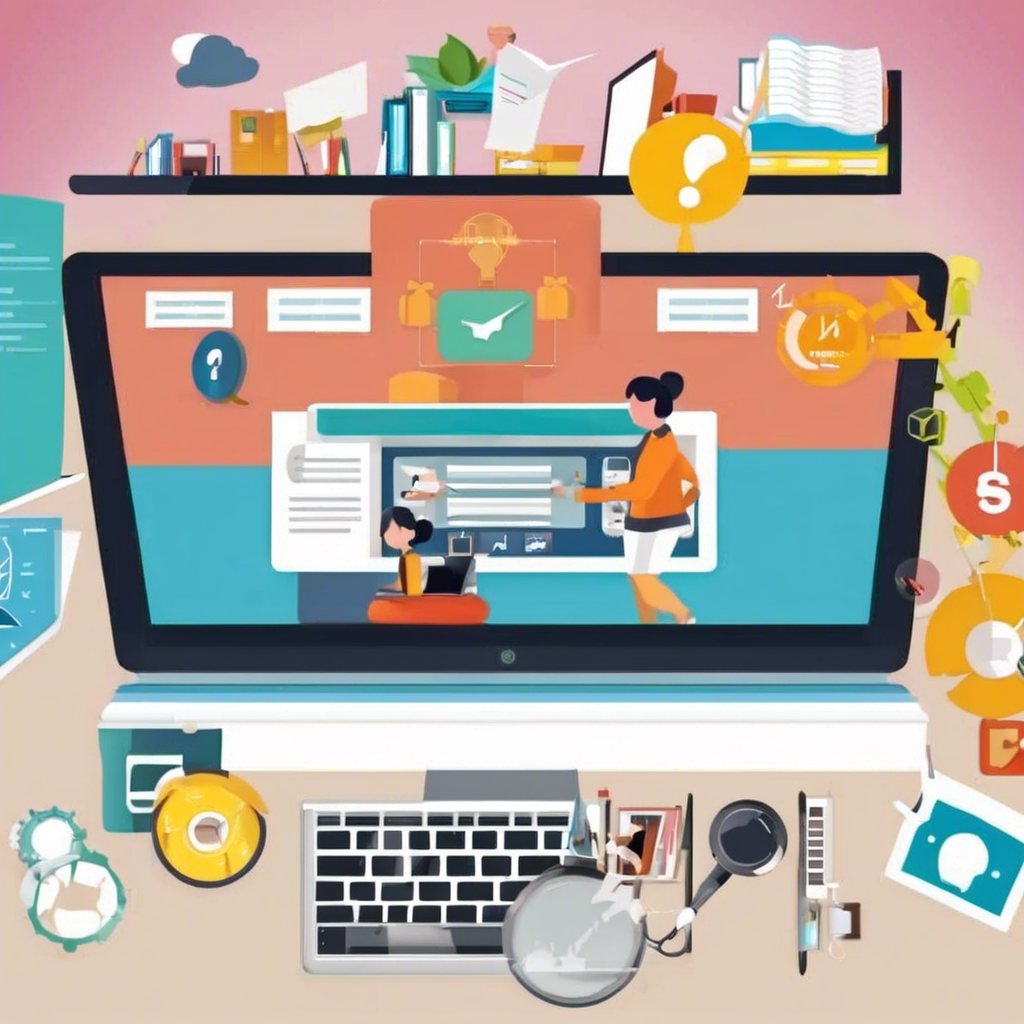eLearning has revolutionized the way people acquire knowledge and skills. It has transformed education into a more flexible, accessible, and personalized experience. Whether for academic learning, professional development, or personal growth, eLearning offers unparalleled advantages in today’s fast-paced digital world.
The Rise of eLearning: A Modern Educational Shift
The digital age has introduced innovations that reshape traditional learning. eLearning refers to the use of electronic resources, such as online courses, webinars, virtual classrooms, and interactive modules, to deliver education. With the increasing availability of high-speed internet and advanced learning management systems (LMS), eLearning has become a preferred method of education worldwide.
Unlike conventional classroom learning, which requires physical presence, eLearning allows students and professionals to access content anytime, anywhere. It eliminates geographical barriers, making quality education accessible to people from diverse backgrounds. As technology evolves, eLearning continues to grow, integrating artificial intelligence, virtual reality, and adaptive learning techniques to enhance engagement and retention.
Key Benefits of eLearning
1. Flexibility and Convenience
One of the most significant advantages of eLearning is its flexibility. Learners can study at their own pace, choosing when and where to engage with course materials. This is especially beneficial for working professionals, parents, and individuals with busy schedules. Unlike traditional learning, which follows rigid timetables, eLearning allows learners to access lessons on-demand, enabling them to balance education with personal and professional commitments.
2. Cost-Effective Education
Traditional education can be expensive due to tuition fees, transportation costs, accommodation, and textbooks. eLearning significantly reduces these expenses by offering affordable online courses. Many platforms provide free or low-cost courses from prestigious universities and institutions. Additionally, learners save money on travel and accommodation, making education more accessible to a wider audience.
3. Personalized Learning Experience
eLearning platforms use advanced algorithms to tailor content according to a learner’s needs, preferences, and progress. Adaptive learning technology assesses performance and adjusts the difficulty level accordingly, ensuring that each student gets a customized learning path. This personalized approach increases comprehension and retention, making learning more effective than traditional one-size-fits-all teaching methods.
4. Access to a Wide Range of Courses
From coding and business management to language learning and digital marketing, eLearning provides an extensive selection of courses. Students can enroll in programs offered by top institutions worldwide without having to relocate. This accessibility encourages lifelong learning and professional development, empowering individuals to acquire new skills and stay competitive in the job market.
5. Interactive and Engaging Content
Modern eLearning incorporates multimedia elements such as videos, quizzes, simulations, and gamification to enhance the learning experience. Unlike conventional lectures, which can be monotonous, interactive content keeps learners engaged and motivated. Virtual reality (VR) and augmented reality (AR) technologies are also being integrated into eLearning, providing immersive experiences that make complex concepts easier to grasp.
6. Improved Retention and Higher Engagement
Studies show that visual and interactive learning methods improve information retention. eLearning platforms use techniques like microlearning (short, focused lessons) and spaced repetition (reviewing content at intervals) to reinforce learning. These methods help learners remember information for a longer period, leading to better academic and professional performance.
7. Self-Paced Learning and Skill Mastery
In traditional classrooms, students must keep up with the instructor’s pace, which may not suit everyone. eLearning allows learners to revisit lessons, pause, rewind, and review concepts until they fully understand them. This self-paced approach promotes mastery of subjects, enabling students to learn at their comfort level without the pressure of keeping up with a group.
8. Global Learning Community
eLearning connects students from around the world, fostering a diverse and inclusive learning environment. Online forums, discussion boards, and social media groups enable learners to interact, share insights, and collaborate on projects. This global exposure enhances cultural understanding and helps build international networks that can benefit personal and professional growth.
9. Eco-Friendly and Sustainable Learning
eLearning significantly reduces the environmental impact of traditional education. It minimizes the need for printed materials, reduces energy consumption associated with physical classrooms, and lowers carbon emissions from commuting. By adopting eLearning, institutions contribute to a more sustainable future while maintaining high-quality education standards.
10. Continuous Skill Enhancement for Professionals
In today’s rapidly changing job market, professionals must continuously update their skills to stay relevant. eLearning offers convenient access to upskilling and reskilling opportunities, allowing employees to acquire new competencies without disrupting their careers. Many companies now invest in online training programs to enhance employee productivity and innovation.
Challenges of eLearning and How to Overcome Them
Despite its numerous benefits, eLearning comes with challenges that learners and educators must address to maximize its effectiveness.
1. Lack of Motivation and Self-Discipline
Without face-to-face interaction, some learners struggle with motivation and discipline. To overcome this, learners should set specific goals, create a study schedule, and engage in interactive discussions with peers and instructors.
2. Limited Social Interaction
Traditional classrooms provide social engagement that online learning lacks. To mitigate this, eLearning platforms integrate discussion forums, live webinars, and group projects to encourage collaboration and networking.
3. Technical Issues and Internet Connectivity
Reliable internet access and technical proficiency are essential for eLearning. Some regions may face connectivity issues, limiting access. Providing offline learning materials, downloadable resources, and mobile-friendly courses can help bridge this gap.
4. Assessment and Credibility Concerns
Some employers and institutions question the credibility of online courses. However, accredited eLearning platforms and recognized certifications are gaining acceptance. Learners should choose reputable platforms to ensure their qualifications hold value in the job market.
The Future of eLearning: What Lies Ahead?
The future of eLearning is promising, with technological advancements shaping the way education is delivered. Artificial intelligence (AI) will continue to personalize learning experiences, providing real-time feedback and adaptive content. Virtual reality (VR) and augmented reality (AR) will offer immersive training simulations, making learning more hands-on and practical.
Blockchain technology is also expected to revolutionize eLearning by ensuring secure, verifiable certifications. With decentralized learning records, employers can easily validate candidates’ qualifications, reducing fraud and increasing trust in online education.
Moreover, the rise of microlearning—short, focused lessons designed for quick consumption—will continue to gain popularity, catering to busy professionals and lifelong learners. Mobile learning (m-learning) will also expand, allowing users to access educational content on smartphones and tablets.
As the demand for remote learning grows, companies, universities, and governments will invest more in eLearning infrastructure, making education more inclusive and accessible to all.
Conclusion
eLearning is reshaping the future of education by offering flexible, cost-effective, and engaging learning experiences. It empowers individuals to learn at their own pace, access global knowledge, and develop skills essential for career growth. While challenges exist, continuous technological advancements are making eLearning more interactive, credible, and inclusive. As digital education continues to evolve, it will play a crucial role in bridging the global knowledge gap and transforming learning for generations to come.

